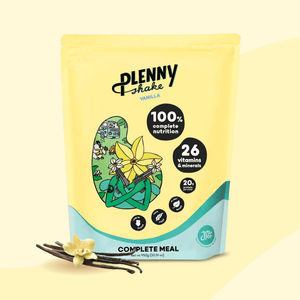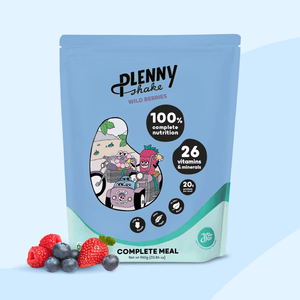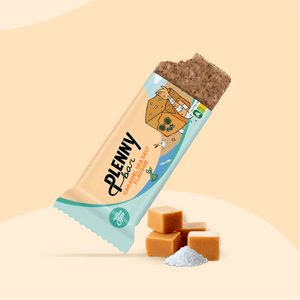- The gut microbiome
- Prebiotics
- Probiotics
- Pre- and probiotics and Jimmy Joy

What is the gut microbiome?
The gut microbiome is the totality of microorganisms, of which bacteria are the most studied ones. They are present in the gastrointestinal tract (GIT) and crucial for human health [2,3]. The gut microbiota plays an important role in the absorption of nutrients and minerals, the production of short-chain fatty acids (SCFAs) and the synthesis of enzymes, amino acids and vitamins [3]. It may sound as if we should embrace all bacteria in the gut, but some bacteria may cause disease instead. So, what is a healthy gut then?
When we speak about gut health, this indicates the perfect balance between the ‘good’ and ‘bad’ microorganisms in the GIT [3,4]. In other words: a lack of beneficial bacteria can make room for the overgrowth of harmful ones. But no worries, this also works the other way around! Bacteria such as Peptostreptoccus, Bifidobacterium, Lactobacillus and Clostridium can inhibit the growth of harmful bacteria and promote a healthy gut [5,6]. Did you know that nutrition is considered to be one of the main drivers in shaping the gut microbiota across the lifetime [4]. Two parts within our diet can positively influence this, namely pre-and probiotics.

The role of prebiotics
Prebiotics are defined as “A selectively fermented ingredient that results in specific changes in the composition and/or activity of the gastrointestinal microbiota, thus conferring benefit(s) upon host health”. In other words, prebiotics are a collective term for substances such as indigestible carbohydrates and fibers that feed our beneficial microbiota. Foods such as whole grains and fruit contain high amounts of prebiotics. [7,8]
What do they do?
All kinds of prebiotics have one thing in common: they cannot be absorbed by our body. This means that they stay intact throughout the digestive tract. Until they reach our gut! Here, prebiotics interact with the intestinal flora. Prebiotics are fermented and used as fuel by the beneficial bacteria in our large intestine. As a result of this process, the beneficial bacteria in our gut produce substances that acidify the large intestine. An acidic environment is beneficial for the growth of these bacteria and inhibits the growth of the harmful ones! [7-10]
The role of probiotics
The World Health Organization defines probiotics as “live microorganisms which when administered in adequate amounts confer a health benefit on the host”. Despite the fact that probiotics are fairly new, no substantive research has been done to make a health claim, yet! Many scientists are researching this field where more promising results are likely to follow in the near future. [11]
What do they do?
As mentioned earlier, beneficial microorganisms can inhibit the overgrowth of the harmful ones. This is exactly where probiotics come in handy. In addition, probiotics have their own individual health benefits that may vary per family and strain. This range of benefits includes reducing the symptoms of digestive disorders, weight loss, enhancing gut health and promoting immune health [3].
Although live microorganisms might sound a bit scary, probiotics are not entirely new to our bodies. Most are similar to the microorganisms naturally occurring in our bodies, such as the earlier mentioned Bifidobacterium and Lactobacillus [6,11]. These species are also found in some foods such as sauerkraut, yoghurt and kimchi [12]. However, not every microorganism is suitable to use as a probiotic. The most important characteristics of probiotics is that they should be able to reach the GIT alive, be resistant to technological processes, and stay stable in acid and bile [13]. One type of microorganism that ticks all those boxes is Bacillus coagulans (B.Coagulans).
Bacillus coagulans is a lactic-acid producing bacterium, for which they support digestion and the immune system. Unlike Bifidobacterium and Lactobacillus, B. Coagulans are spore-forming [14,15]. This results in the ability to survive gastric acid and reach the small intestine intact. Because of these beneficial effects, this type of probiotic is currently produced by multiple companies in numerous variations.
Pre- and probiotics and Jimmy Joy
At Jimmy Joy we are committed to bringing you the healthiest meal scientifically possible. And keeping your gut healthy is an important part of that. By adding both pre- and probiotics, a so-called synbiotic effect is achieved: The prebiotics can be used as a fertilizer for the probiotics. So, let’s find out how we keep your gut happy! [16]

Prebiotics
The prebiotics we use in our products originate from inulin, oats, soy and flaxseed. Let’s have a look into why we chose these sources.
Inulin
We added inulin because it serves as a direct food source for some of the good microflora in your gut. They help you stay healthy by leaving less room for the bad bacteria to grow. Inulin also helps in weight management and increases the calcium absorption [17, 18].
Oats
Oats are the main ingredient in our Plenny Shakes, and the main prebiotics in oats are soluble fibres called β-glucans. β-glucans do a lot for you: they don’t just confuse you about how to pronounce their name, they can also reduce your blood pressure and blood cholesterol level. As a result, they can lower the risk of diseases in your heart, which comes in handy if you have one [19]. On top of that β-glucans help improve the response rate to glucose after meals and thereby improves insulin sensitivity [20-22].
Soy
We need to have a little chat about an unavoidable side effect of food: poop. The faster your stools leave your body, the better, because it lowers the time carcinogenic compounds are in the gut [19]. Soy has lots of insoluble fibers: mainly hemicellulose and cellulose, which are polymers that make up the cell walls of plants [23]. These compounds help increase the weight and volume of your stool. And if you remember Newton and the apple, gravity will get your heavier stools out of your gut faster. It’s like a Formula One race in your bowels, with turds instead of cars. We’re very sorry about this visual.
Flaxseed
Last but not least: flaxseed. Flaxseed is an excellent source of viscous fibres [24], named after how they form gels when mixed with body fluids [25]. These fibers have a general effect on lowering blood pressure, and as a result they may help reduce the risk of cardiovascular diseases [26]. Like soy fibers flaxseed also contribute to the Formula One race by increasing the weight and volume of stools [24, 27].
To top it off, all these fibers can convert into short-chain fatty acids (SCFAs) [19], which makes your immune system function better [24].
Probiotics
ProDURA® is one of the brands producing Bacillus coagulans UABc-20. Although the similarities between brands and types ought to be high, ProDURA has some specific benefits that stand out. ProDURA® has a protective coating that remains dormant until it meets the perfect conditions of heat, pH, and moisture found in the large intestines. Based on its composition, this strain can survive extreme processing, shipping, and storage in addition to the natural challenges of the digestive tract.
When studied, the ProDURA® brand of Bacillus coagulans appeared to have the highest survival rate at 105°C [28]. Therefore, the Plenny Shake does now include this type of probiotic to support your digestion and immunity.
Conclusion
In conclusion, beneficial bacteria in our gut can inhibit the overgrowth of the harmful ones and promote a healthy gut. This can be achieved by implementing pre-and probiotics in your diet. Probiotics make less room for the harmful bacteria and prebiotics feed these beneficial gut bacteria. For this reason both pre- and probiotics can be found in our products. Click here to see our entire product range!
Sources
- Wang B, Yao M, Lv L, Ling Z, Li L. The Human Microbiota in Health and Disease. Engineering. 2017 Feb 1;3(1):71–82.
- Davani-Davari D, Negahdaripour M, Karimzadeh I, Seifan M, Mohkam M, Masoumi SJ, et al. Prebiotics: Definition, Types, Sources, Mechanisms, and Clinical Applications. Foods. 2019 Mar;8(3):92.
- Cresci GAM, Izzo K. Chapter 4 - Gut Microbiome. In: Corrigan ML, Roberts K, Steiger E, editors. Adult Short Bowel Syndrome [Internet]. Academic Press; 2019 [cited 2020 Aug 7]. p. 45–54. Available from http://www.sciencedirect.com/science/article/pii/B9780128143308000044
- Thursby E, Juge N. Introduction to the human gut microbiota. Biochem J. 2017 Jun 1;474(11):1823–36.
- Zhang Y-J, Li S, Gan R-Y, Zhou T, Xu D-P, Li H-B. Impacts of Gut Bacteria on Human Health and Diseases. Int J Mol Sci. 2015 Apr 2;16(4):7493–519.
- Fijan S. Microorganisms with Claimed Probiotic Properties: An Overview of Recent Literature. Int J Environ Res Public Health. 2014 May;11(5):4745–67.
- Markowiak P, Śliżewska K. Effects of Probiotics, Prebiotics, and Synbiotics on Human Health. Nutrients [Internet]. 2017 Sep 15 [cited 2020 Sep 2];9(9). Available from: https://www.ncbi.nlm.nih.gov/pmc/articles/PMC5622781/
- Davani-Davari D, Negahdaripour M, Karimzadeh I, Seifan M, Mohkam M, Masoumi SJ, et al. Prebiotics: Definition, Types, Sources, Mechanisms, and Clinical Applications. Foods. 2019 Mar;8(3):92.
- Holscher HD. Dietary fiber and prebiotics and the gastrointestinal microbiota. Gut Microbes. 2017 04;8(2):172–84.
- Joint FAO/WHO Working Group. Guidelines for the Evaluation of Probiotics in Food. Canada; 2002 May.
- Marco ML, Heeney D, Binda S, Cifelli CJ, Cotter PD, Foligné B, et al. Health benefits of fermented foods: microbiota and beyond. Curr Opin Biotechnol. 2017 Apr 1;44:94–102.
- Tuomola E, Crittenden R, Playne M, Isolauri E, Salminen S. Quality assurance criteria for probiotic bacteria. Am J Clin Nutr. 2001 Feb 1;73(2):393s–8s.
- Cao J, Yu Z, Liu W, Zhao J, Zhang H, Zhai Q, et al. Probiotic characteristics of Bacillus coagulans and associated implications for human health and diseases. J Funct Foods. 2020 Jan 1;64:103643.
- Konuray G, Erginkaya Z. Potential Use of Bacillus coagulans in the Food Industry. Foods [Internet]. 2018 Jun 13 [cited 2020 Aug 7];7(6). Available from: https://www.ncbi.nlm.nih.gov/pmc/articles/PMC6025323/
- Markowiak P, Śliżewska K. Effects of Probiotics, Prebiotics, and Synbiotics on Human Health. Nutrients [Internet]. 2017 Sep 15 [cited 2020 Sep 2];9(9). Available from: https://www.ncbi.nlm.nih.gov/pmc/articles/PMC5622781/
- Mohanty, D., et al., Prebiotics and synbiotics: Recent concepts in nutrition. Food Bioscience, 2018. 26: p. 152-160.
- Shoaib, M., et al., Inulin: Properties, health benefits and food applications. Carbohydrate Polymers, 2016. 147: p. 444-454.
- Ciudad-Mulero, M., et al., Dietary fiber sources and human benefits: The case study of cereal and pseudocereals, in Advances in Food and Nutrition Research. 2019, Academic Press.
- Wood, P.J., Evaluation of oat bran as a soluble fibre source. Characterization of oat β-glucan and its effects on glycaemic response. Carbohydrate Polymers, 1994. 25(4): p. 331-336.
- Mälkki, Y. and E. Virtanen, Gastrointestinal Effects of Oat Bran and Oat Gum: A Review. LWT - Food Science and Technology, 2001. 34(6): p. 337-347.
- Daou, C. and H. Zhang, Oat beta‐glucan: its role in health promotion and prevention of diseases. Comprehensive reviews in food science and food safety, 2012. 11(4): p. 355-365.
- Riaz, M.N., Soy Beans: Processing, in Encyclopedia of Food and Health, B. Caballero, P.M. Finglas, and F. Toldrá, Editors. 2016, Academic Press: Oxford. p. 48-53.
- Ibrügger, S., et al., Flaxseed dietary fiber supplements for suppression of appetite and food intake. Appetite, 2012. 58(2): p. 490-495.
- Chutkan, R., et al., Viscous versus nonviscous soluble fiber supplements: mechanisms and evidence for fiber-specific health benefits. J Am Acad Nurse Pract, 2012. 24(8): p. 476-87.
- Khan, K., et al., The effect of viscous soluble fiber on blood pressure: A systematic review and meta-analysis of randomized controlled trials. Nutrition, Metabolism and Cardiovascular Diseases, 2018. 28(1): p. 3-13.
- Song, B.K., et al., Colon transit time according to physical activity level in adults. Journal of neurogastroenterology and motility, 2012. 18(1): p. 64-69.
- Tan, J., et al., The role of short-chain fatty acids in health and disease. Adv Immunol, 121: p. 91-119.
- Bacillus Coagulans (Spores) - High Quality Probiotics [Internet]. UAS Labs. [cited 2020 Aug 7]. Available from: https://uaslabs.com/research/produra-bacillus-coagulans/
 Everything You Need In One Meal
Everything You Need In One Meal
 Stay Full For 3-5 Hours
Stay Full For 3-5 Hours




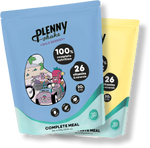
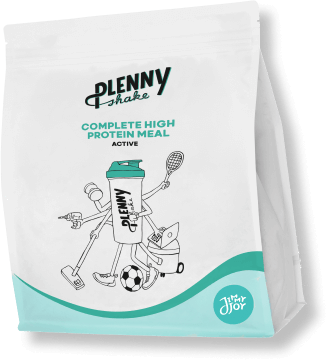
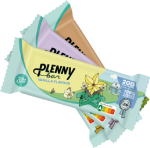

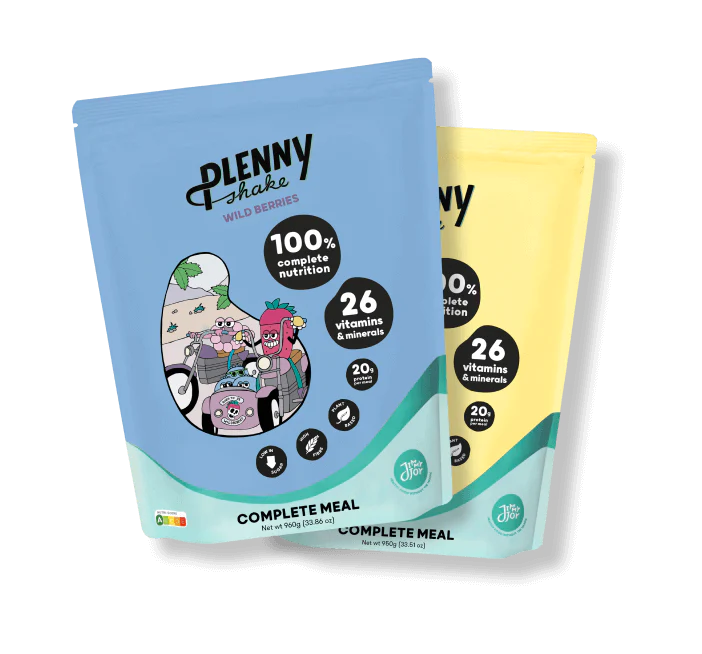


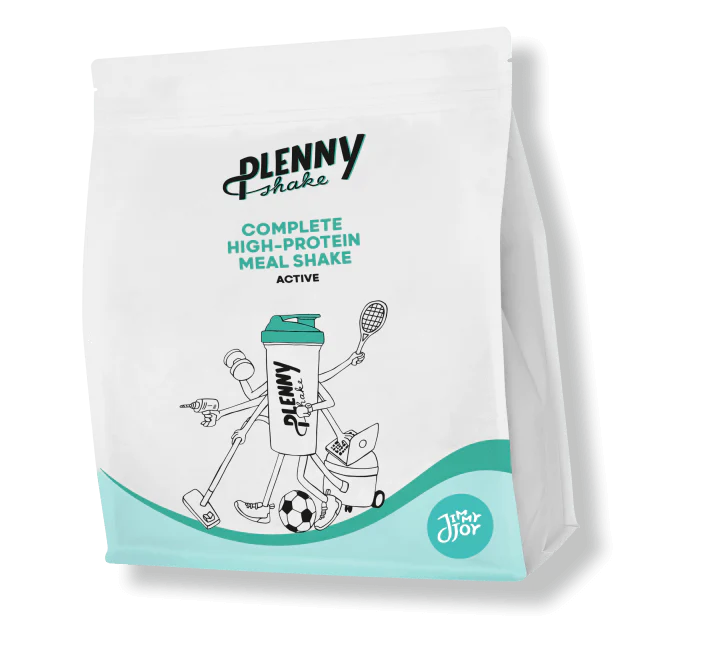

 Product added to cart
Product added to cart

